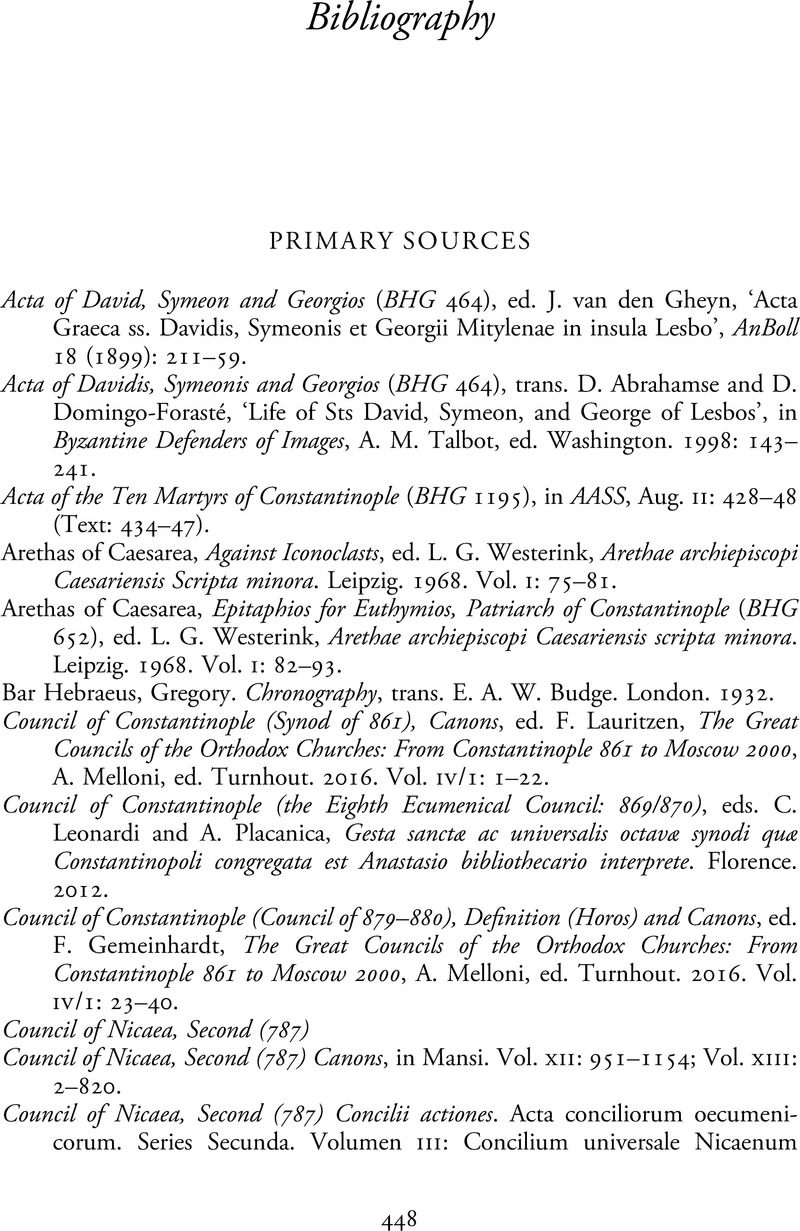Book contents
- Literary Circles in Byzantine Iconoclasm
- Literary Circles in Byzantine Iconoclasm
- Copyright page
- Contents
- Figures and Maps
- Acknowledgements
- Note to the Reader
- Abbreviations
- Introduction
- Chapter 1 The Stoudite Milieu
- Chapter 2 The Methodian Milieu
- Chapter 3 The Dekapolitan Milieu
- Chapter 4 The Secular Milieux and Their Rewriting of the Second Iconoclasm
- Chapter 5 The Ignatian Milieu
- Chapter 6 The Photian Milieu
- Chapter 7 Mobility between Milieux
- Chapter 8 Final Remarks
- Book part
- Bibliography
- General Index
- Index of Manuscripts
- References
Bibliography
Published online by Cambridge University Press: 21 January 2021
- Literary Circles in Byzantine Iconoclasm
- Literary Circles in Byzantine Iconoclasm
- Copyright page
- Contents
- Figures and Maps
- Acknowledgements
- Note to the Reader
- Abbreviations
- Introduction
- Chapter 1 The Stoudite Milieu
- Chapter 2 The Methodian Milieu
- Chapter 3 The Dekapolitan Milieu
- Chapter 4 The Secular Milieux and Their Rewriting of the Second Iconoclasm
- Chapter 5 The Ignatian Milieu
- Chapter 6 The Photian Milieu
- Chapter 7 Mobility between Milieux
- Chapter 8 Final Remarks
- Book part
- Bibliography
- General Index
- Index of Manuscripts
- References
Summary

Information
- Type
- Chapter
- Information
- Literary Circles in Byzantine IconoclasmPatrons, Politics and Saints, pp. 448 - 524Publisher: Cambridge University PressPrint publication year: 2021
